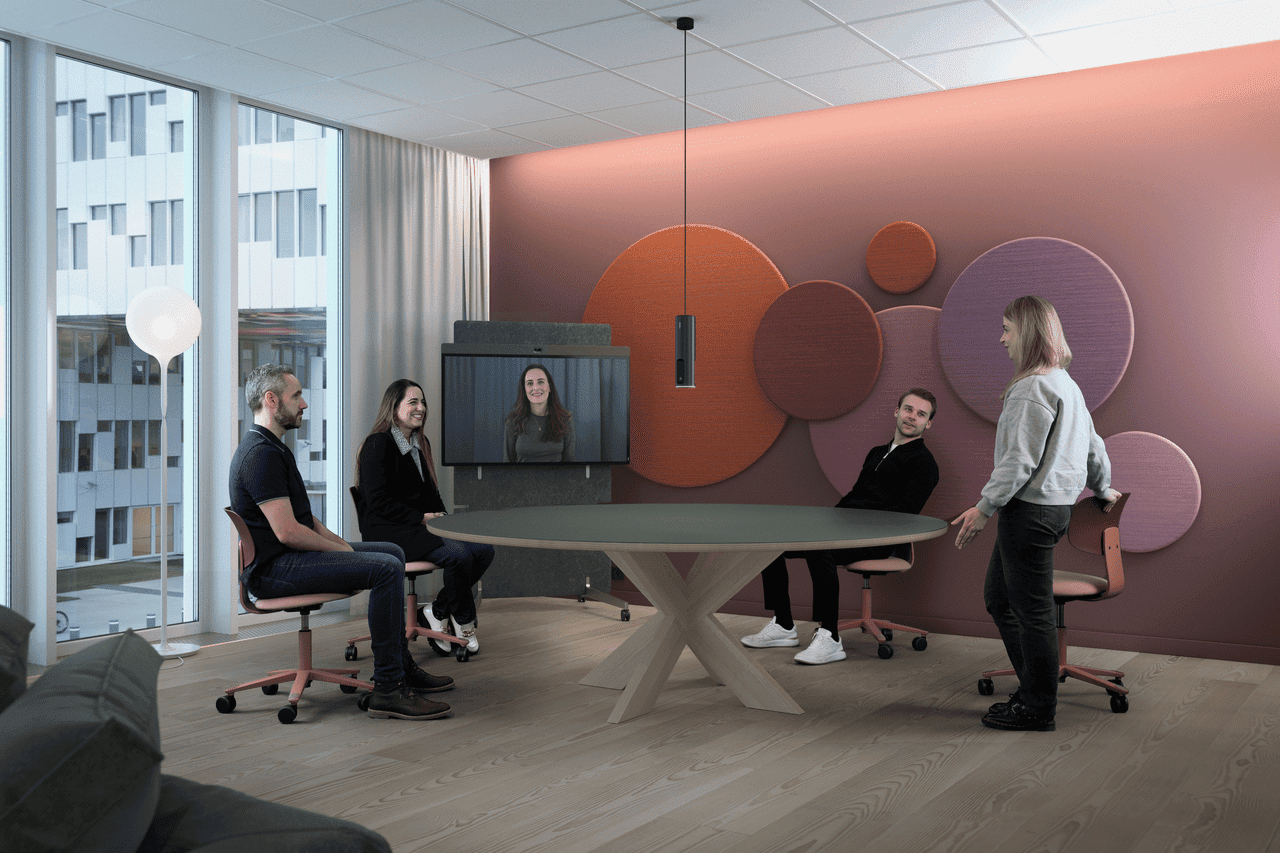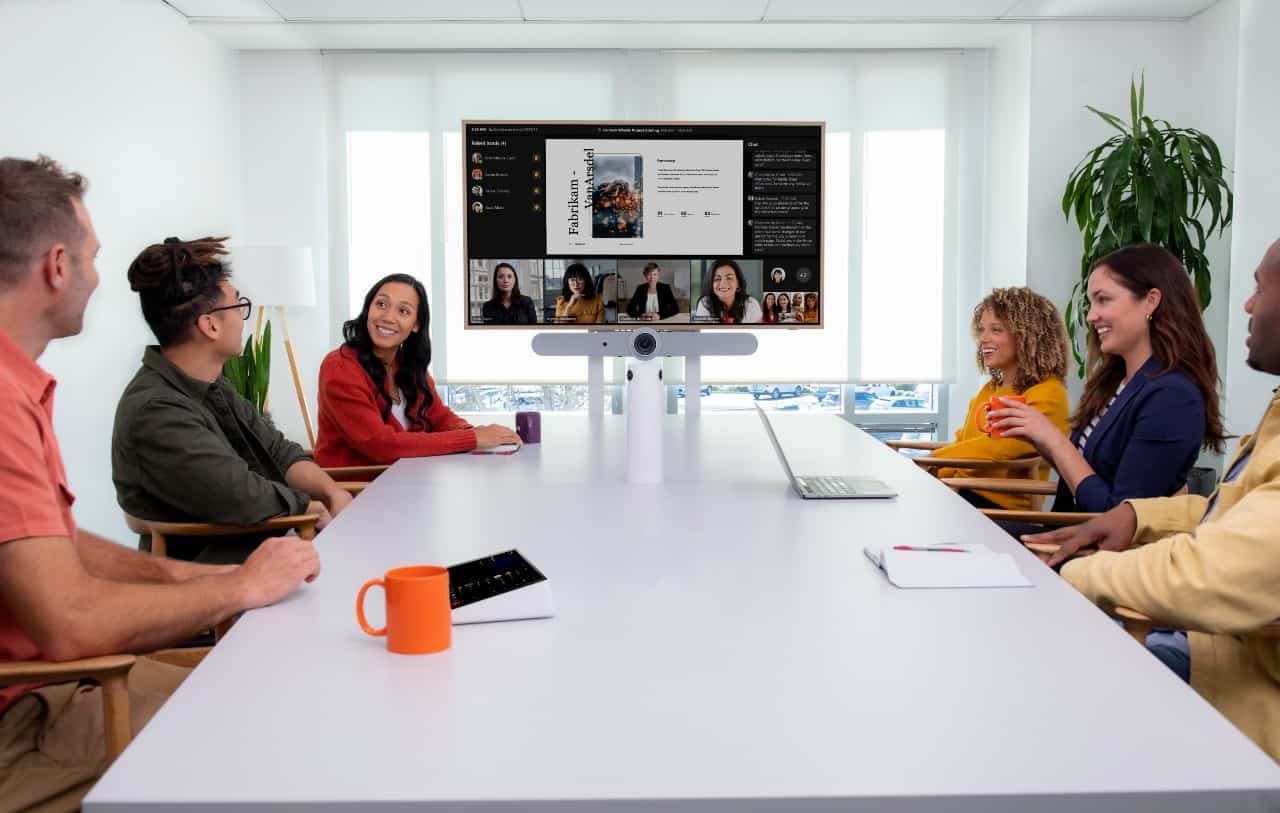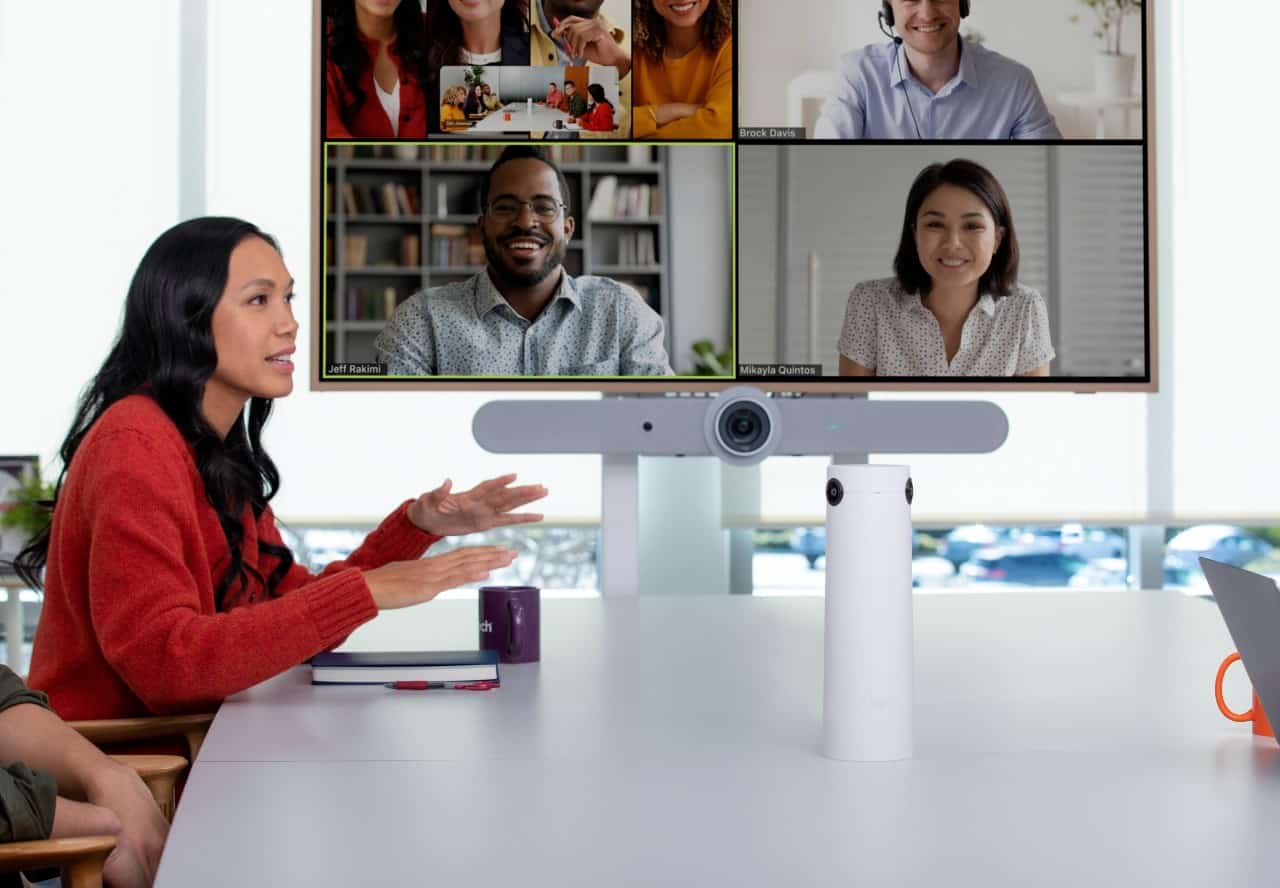The rise of remote and hybrid work fundamentally changed meetings in today’s workplace: 82% of company leaders intend to allow employees to work remotely at least part of the time. With some participants logging on to meetings remotely and others joining in person, how can you ensure everyone in attendance feels included and equal?
“Meeting equity,” or ensuring that all meeting participants (no matter where they’re located) have equal opportunities to contribute, is more important than ever. Here, we’ll explore the meaning of the term, why companies are adopting the practice, the risks of ignoring it and the many positive outcomes that it generates. We’ll also take a look at some examples and innovative approaches to achieving meeting equity, and go over helpful recommendations to guide your organization on its journey toward a more inclusive and productive future.
What Is Meeting Equity?
Regarding meetings within an organization, equality means a level playing field for all attendees. Equity ensures that all employees, regardless of location or working arrangements, have equal access to relevant and productive meetings and can participate easily and freely.
This notion has roots in inclusion and fairness. It recognizes that employees who work remotely, or in hybrid environments, should have the same access as their in-office colleagues to the information being shared.
Why Should Organizations Prioritize Meeting Equity?
Prioritizing meeting equity is one way for organizations to increase productivity, promote teamwork and improve employee happiness. Compelling statistics indicate that opportunities for remote work are becoming more commonplace — and with this change, it’s crucial for companies to ensure that all employees have the same opportunities.
For example, a Gallup study found that companies with highly engaged teams see a 21% boost in profitability. Since employees devote much of their time to meetings, the ability to meaningfully contribute plays a significant role in engagement and satisfaction. Therefore, organizations must do everything they can to make meeting environments fair and productive.
Additionally, meeting equity promotes a diverse culture by creating an atmosphere that makes both remote and in-person employees feel valued and included. It also helps with talent acquisition and retention, recognizes the value of mental health and leads to increased growth and profitability. In a landscape that is quickly changing, equality in meetings is essential for businesses looking to grow and keep up with progress.
Benefits of Meeting Equity
Meeting equity creates a level playing field, enabling all employees to participate actively in the conversation and increasing engagement from remote participants. This results in a more motivated and committed workforce and strong professional relationships between remote and in-office personnel.
Clear and Effective Communication
Organizations can close communication gaps by guaranteeing that all employees have equal access to meetings and can easily share their perspectives. Effective meeting practices ensure a steady flow of information and reduce the potential for misunderstandings and miscommunications.
Well-rounded Meeting Outcomes
When run fairly, meetings can promote an equitable and inclusive decision-making process. Employees working both in person and remotely should have equal opportunities to contribute to and influence discussions, ensuring that decisions reflect various perspectives and are less likely to be biased or one-sided.
Employee Retention
Companies that prioritize equity and inclusion are more likely to retain their best employees. When individuals feel included and valued by their employer, they are less likely to seek new employment opportunities due to unhappiness or disengagement.
Increased Creativity and Innovation
Everyone benefits when all employees are able to effectively contribute. Equal participation encourages new ideas from varying viewpoints, resulting in fresh ideas and perspectives that lead to more creative problem solving and inventive solutions, setting organizations apart from the competition.
Lack of Meeting Equity
When organizations ignore meeting equity, there can be significant repercussions. In the absence of equity, organizations run the risk of encountering a variety of difficulties, including the following:
Employee Frustration
When companies don’t have a reliable way of including remote employees in the conversation, it makes it difficult for them to effectively communicate with other meeting attendees and contribute to the discussion. This can leave those staff members who aren’t physically present feeling frustrated or underappreciated — therefore decreasing morale.
Decreased Participation
Similarly, when employees don’t feel as if their voices are valued, they’re less likely to speak up during meetings. As a result, you’ll miss out on many of the unique perspectives that could benefit your company. What’s more, the repercussions of this extend far beyond meeting participation — people who believe they aren’t being heard at work are more likely to seek new employment than raise the issue with management.
Disadvantaged Remote Participants
Common complaints of remote meeting participants include technical difficulties, not being able to hear what’s being said, feeling left out of the conversation and difficulty during collaboration sessions. Having the most up-to-date virtual meeting technology plays a major role in solving these issues, and is thus an integral part of making meetings more equitable.
Examples of Meeting Equity in Action
So you want to make your meeting more equitable, but don’t know where to start. That’s ok, we’ve got you covered with these common examples of what meeting equity looks like in practice:
Using Advanced Video Conferencing Tools
Choose top-notch video conferencing platforms such as Zoom, Microsoft Teams or Cisco Webex to guarantee remote participants a smooth and engaging conference experience. Zoom’s platform takes meeting equity to another level with its Zoom Smart Gallery, which helps in-person attendees better connect with remote participants. Smart Gallery’s AI-powered capabilities offer individual tiles for each attendee in a conference room instead of a zoomed-out view of the conference table.
Having Dedicated Remote Meeting Spaces

Conference rooms should have the newest technology and ergonomic arrangements to promote inclusion and engagement while hosting meetings with remote participants. In-person technology also plays a pivotal role in driving meeting equity. Up-to-date conference room equipment such as microphones, displays and speakers help ensure all participants can see and hear clearly.
Creating Hybrid Meeting Procedures
Define meeting rules that accommodate in-person and virtual attendees, guaranteeing that each team member has equal speaking time and opportunities to participate.
Using a Real-time Transcription Service
Provide live captions with AI-driven transcription services to help all participants — especially those with hearing impairments — follow the conversation more easily.
Offering Interactive Collaboration Tools
Regardless of participants’ locations, digital whiteboards, screen sharing and collaboration software can promote active involvement and idea sharing.
How to Achieve Meeting Equity: 5 Tips
Organizations should prioritize equity, both in meetings and across other areas of the business, to foster a welcoming and productive workplace for all employees. Here are some meeting-specific suggestions for how businesses can do this:
1. Regularly Review Your Meeting Methods
Start by analyzing your meeting practices, such as evaluating how frequently you have them and how effective they are. Invite feedback from your staff and listen to what they say; they’ll be able to help you pinpoint where inequities exist. Leadership can glean the opinions and experiences of conference attendees from surveys or other anonymous feedback tools.
2. Provide Technology Resources for Employees
Some staff members may feel uncomfortable with remote meetings and collaboration technologies. Give them the confidence to actively use these tools in online conferences by creating tutorials or running training sessions. If needed, you can also offer in-meeting assistance with functions such as screen sharing and chatting.
3. Invest in Audio-Visual Equipment
Technical issues can derail meetings and tend to negatively impact remote attendees more than others. Invest in high-quality audio-visual gear, such as Logitech Sight or Neat Center to avoid disruptions in communication. These companion devices also promote meeting equity by enabling remote participants to better see and hear others in the room. This investment can improve the experience for all meeting attendees. Experts such as DGI can help design and transform your meeting rooms to more easily foster meeting equity.
4. Encourage Different Points of View
Ensure everyone attending your meetings can speak to the group using inclusive facilitation techniques. As part of an inclusive meeting strategy, set clear agendas, use inclusive language and actively invite input from all attendees. Appointing a facilitator can help meetings stay on-task and keep them running smoothly.
5. Cultivate an Empathetic and Inclusive Environment
Empathy and inclusion are especially essential for hybrid and fully remote teams. Inspire your staff to consider and value one another’s individual experiences and points of view. Promote the value of diversity and inclusion throughout your organization.
Promote Meeting Equity With DGI
As the way we work continues to evolve, addressing equity and improving your organization’s work environment is more important than ever. Looking for solutions that help your organization have more equitable and productive meetings? Talk to DGI about how you can make meeting equity a reality.







